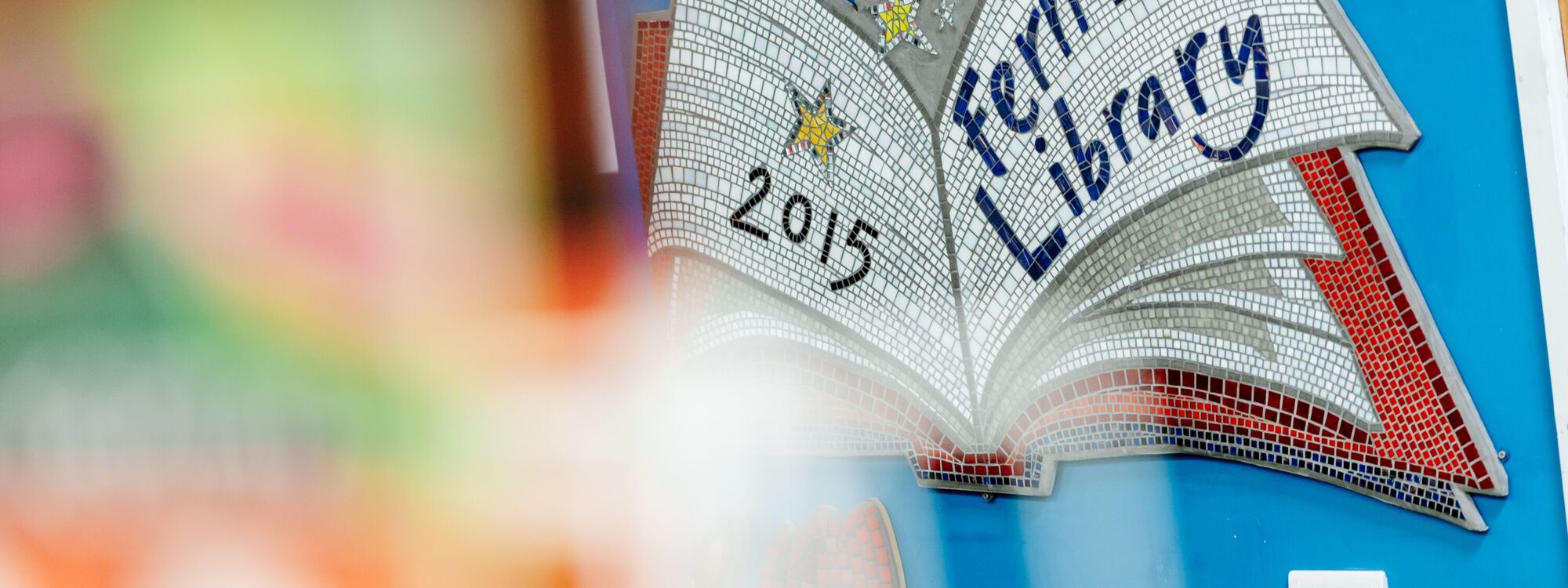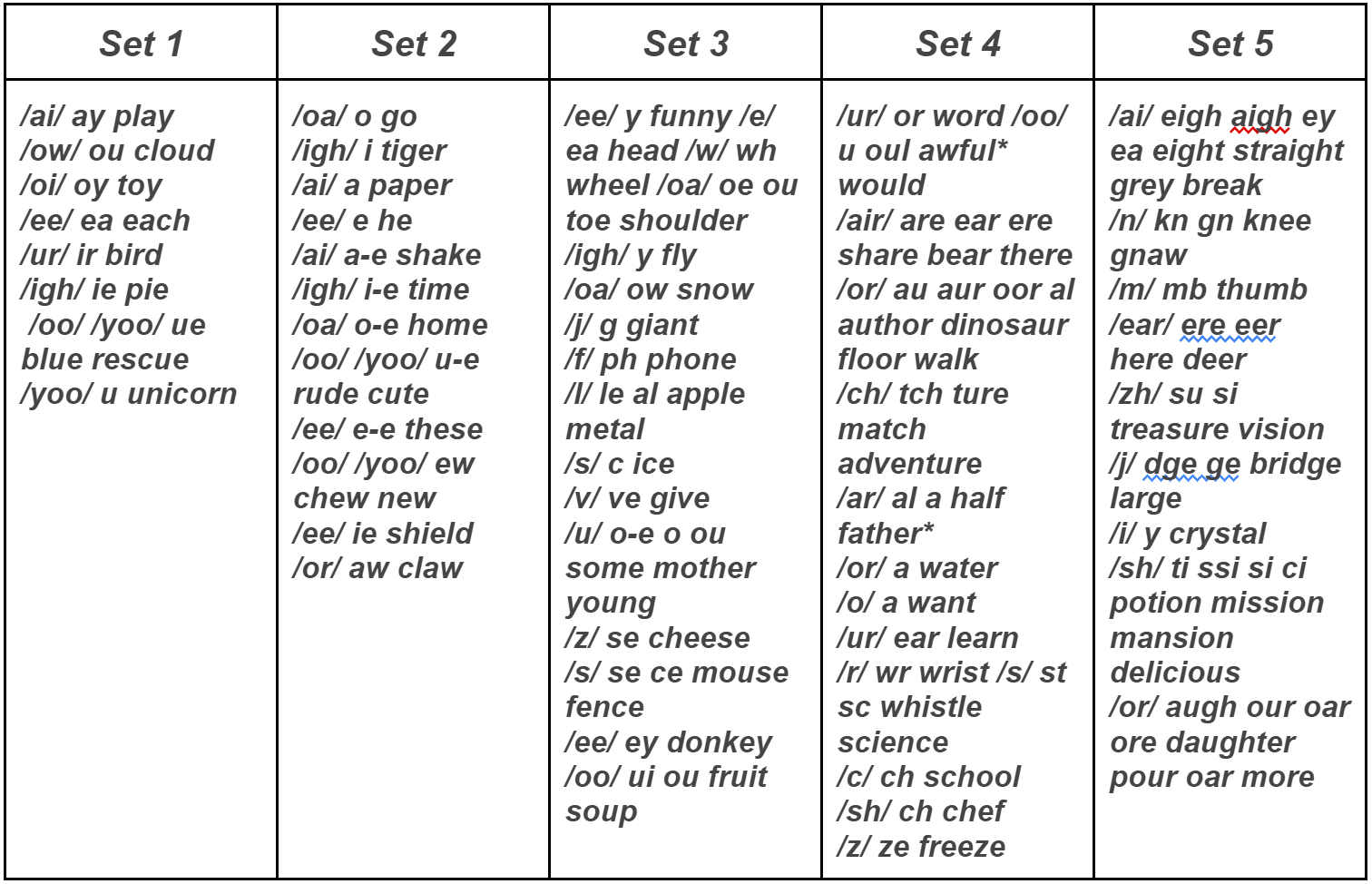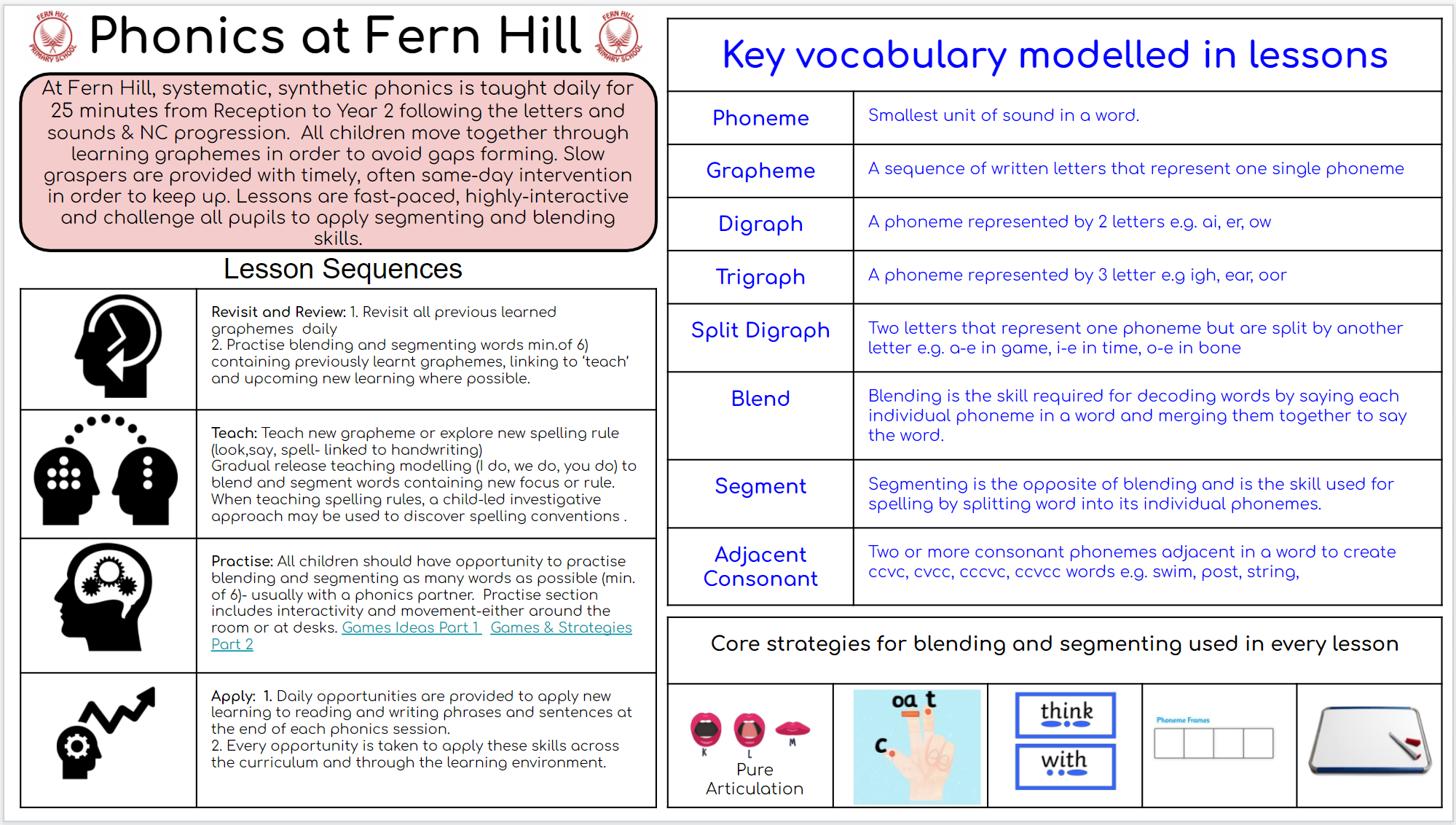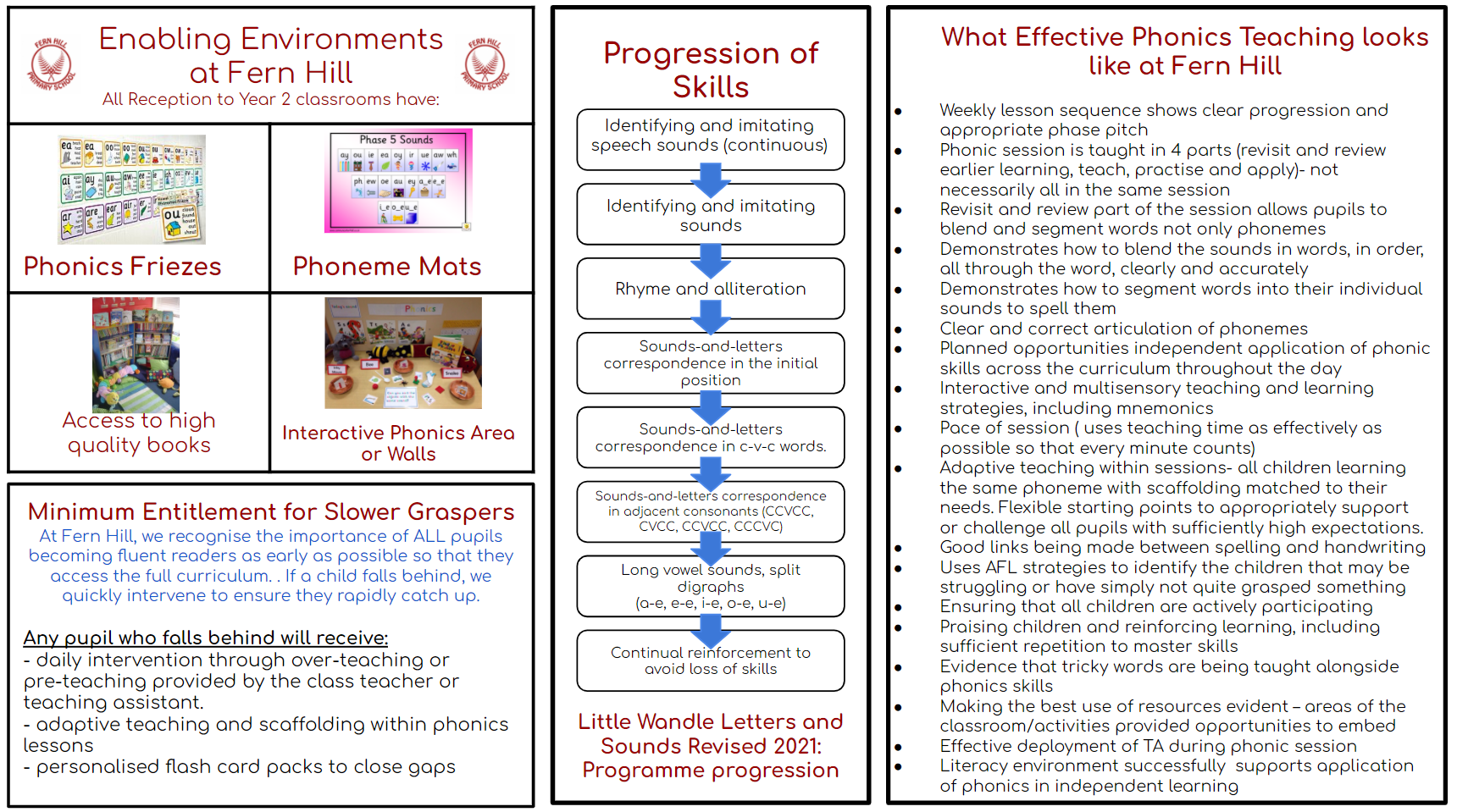
Reading
At Fern Hill, we awaken the inner reader in every child. We recognise that learning to read unlocks unlimited possibilities so from their very first day with us in Nursery, our pupils are given the skills to enable them to decode and understand language to ensure that they become independent, confident and fluent readers at the earliest possible stage.
Every one of our pupils are encouraged to become life-long readers who take pleasure in learning from, or escaping in, a great book every day - in school and at home. At school, our children are surrounded by a plethora of engaging, informative, enjoyable and challenging texts across the curriculum and have access to stimulating reading environments that promote and celebrate a passion for reading.
All our children enjoy the pleasure of being read to every day. They are guided in finding and choosing books that they love as well as being introduced to exciting new authors, poets and topics to broaden and enrich their reading diet.
Throughout our curriculum, pupils read, comprehend, interpret and respond to texts that inspire them, educate them, enrich their vocabulary, challenge their thinking, make them laugh, make them cry and, most importantly, teach them to understand, empathise with and value different cultures, traditions and opinions - real or imagined.
Children take home reading books each week from when they are ready in Reception and then throughout their time with us right up to Year 6. We use the Collins Big Cat Letter and Sounds revised reading scheme in Nursery, Reception and Year 1. This scheme is organised by the school’s phonics progression to ensure books are accurately matched to our pupils’ phonics ability.
Reading Record
Each child has their own Home School Diary which is used as a reading record book. Parents and carers, and our older pupils, are asked to sign the reading record every time they read at home and jot down a comment. For parents and carers, comments might be about whether their child found the book easy or difficult to read. Did they struggle with a particular sound or word? Did they enjoy the book? Could they retell you the story, or part of the story? Our older children make a note of how many pages they have read and whether they are enjoying the book and would recommend it to friends. What was interesting about the chapter you just read? Was it funny, or sad, and why? These comments are invaluable to teachers.
Phonics and Early Reading
We follow the Little Wandle Letters and Sounds Programme to help our children to learn how to read and write. This programme is supplemented by the Collins Big Cat Phonics Reading Scheme in KS1.
From Nursery to Year 2, children are taught phonics and spelling on a daily basis. Phonics is based on learning the smallest sounds which make up words. For example: sh – o – p
Children learn the sounds, then blend them together to read a word. To spell, children are taught to say the word, segment it into the smallest sounds then write it. They are also taught to read (by sight) and spell high frequency words (words that they commonly find in the books they read).
Little Wandle Letters and Sounds Programme
The Little Wandle Letters and Sounds Programme is divided into five phases which children continue to learn throughout the school.
Nursery - Phase One
Phase One supports the importance of speaking and listening and develops children’s discrimination of sounds, including letter sounds.
Nursery and Reception - Phase Two
In Phase Two, children learn to pronounce the sounds themselves in response to letters, before blending them. This teaches them to read simple words and captions.
For example: s – o – ck
Letters: s, a, t, p, i, n, m, d, g, o, c, k, ck, e, u, r, h, b, f, ff, l, ll, ss, ch, sh, th, ng, nk
Reception - Phase Three
Phase Three completes the teaching of the alphabet and moves on to sounds represented by more than one letter (digraphs and trigraphs).
For example: r – ai – n
The children will learn letter names and how to read and spell some high frequency words.
Letters: j, v, w, x, y, z, zz, qu, ai, ee, igh, oa, oo, ar, or, ur, ow, oi, ear, air, er
Reception and Year 1 – Phase Four
In Phase Four, the children learn to read and spell words containing adjacent consonants.
For example: s – t – a – m - p
Year 1 – Phase Five
In Phase Five, the children broaden their knowledge of sounds for use in reading and spelling. They will begin to build word-specific knowledge of the spellings of words.
For example: d – o – n – k - ey

Year 2
In Year 2, children continue to embed ‘growing the code’ by consolidating the reading and writing skills taught in the previous phonic phases so that they become fluent and increasingly expressive readers who comprehend well.
Resources to support reading and spelling practice at home are published on the Home Learning Google Classrooms.


